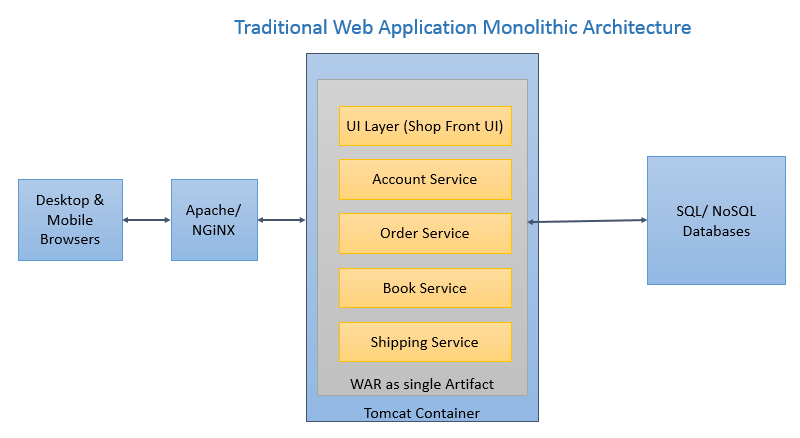When I started my job at Paytm, an e-commerce and payment gateway company in India, it was a startup company. We began with monolithic application architecture because there was only two of us there at the time. Many startups begin application development by following monolithic application architecture due to the small size of their team. Monolithic architecture doesn't give you big operational overhead costs, and they often have just one massive codebase.
A monolithic application is a single artifact that includes the interfaces of all layers. For example, a database might have several tables and DAO classes, a client-side UI that includes HTML pages and JavaScript, and a server-side application. This server-side application has to handle HTTP requests, process business logic using service classes, retrieve and update data from the database, exchange messages with other systems, and return responses in an HTML/JSON/XML format. A monolithic application often has a massive codebase which includes all of the aforementioned. As a developer, if you want to make any changes to this massive codebase, you have to build and deploy another updated version of the server-side application.
In a server-side application, you have to focus on development to provide support to a variety of different clients, such as desktop browsers, mobile browsers, and native mobile applications, including Android and iOS. A monolithic application must, therefore, have a complete code in order to support a variety of different clients. Let's discuss an example of a monolithic architecture pattern.



